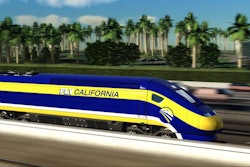
As many as a million construction workers participated in Occupational Health and Safety Administration’s (OSHA) National Fall Safety Stand Down earlier this month. I saw a number of press releases, photos and tweets from companies that were participating in the event.
However, one of the first news articles I read after the Stand Down ended was about a fatal fall by a construction worker in Chicago.
While holding an event like this is great to raise awareness, it’s important to translate those lessons learned during the photo ops to the jobsite. Taking part in an initiative like this won’t help your employees unless they are able to apply that information to their individual circumstances on the jobsite.
It’s important to implement safety lessons on the jobsite, but you must recognize and address the barriers you will encounter while implementing training.
Here are three obstacles to be on the lookout for:
1. Apathy
Workers with considerable construction experience often feel they know everything there is to know, and there’s nothing new to be learned. If they’ve worked for many years and been lucky enough not to have an accident in spite of unsafe behavior, they may be convinced their “common sense” way is the right way. Bringing them around to your way of thinking will take time, but it can be done with patience and reinforcement, combined with a reasonable but firm attitude that continuing unsafe behavior will not be tolerated.
2. Time
Shortcuts are called shortcuts for a reason. Working safely will require a greater time investment than doing things the “easy” way. This obstacle can be removed with a top-down approach; supervisors must make it clear to the crews that they will not be pressured to hurry through equipment walk-arounds, installation of trench boxes, safety barriers, etc. and other time-consuming safety measures.
3. Value
If you only act like safety matters to you during training and toolbox talks, it won’t matter much to your employees when they’re working. Don’t merely pay lip service where safety is concerned; your workers will see through it in a second. Demonstrate a consistent commitment—and require the same of your supervisors—and the abstract ideas in your safety meetings will become a reality on your jobsites.
Editor’s note: Amy Materson is the managing editor for sister site Equipment World.






![shutterstock_130196291[1]](https://img.equipmentworld.com/files/base/randallreilly/all/image/2013/07/eqw.shutterstock_1301962911.png?auto=format%2Ccompress&fit=crop&h=167&q=70&w=250)





